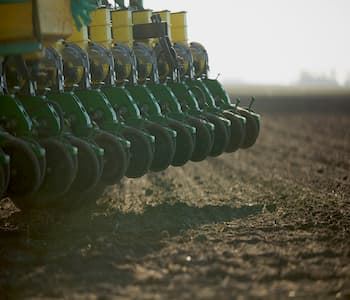Put Seed in Its Rightful Place
Mar 19, 2019

Every seed in your planter is full of promise. But if you plant it in the wrong place or in the wrong soil type, that seed won’t reach its potential. And neither will your yield.
That’s a lesson the Johnson brothers (Neal, Daryl and Dale), Neal’s son Ross and Dale’s son Ryan learned after they started using the R7® Top 10 feature on their eastern North Dakota operation. They use variable-rate seeding methods and grow corn, soybeans and edible beans.
Choosing the right seed
The Johnsons have come to count on the R7 Top 10 feature when choosing seed. Drawing from multiple WinField United sources, the tool gives them a quick snapshot of top-performing hybrids in their area and on specific soil types. It even helps them decide where to plant specific varieties and hybrids on their operation.
In addition to soil type, they can look at photos to see ear flex, the number of kernels around and how different hybrids respond to different populations. “There’s peace of mind knowing how certain hybrids will react as we work to push populations,” says Dale.
Dale regards the Top 10 as a valuable planning tool. He appreciates being able to look at both national Answer Plot® data and insight trials data from individual farms in the area to help him and his farming partners choose the seed that is predicted to work best on their soils.
An investment that’s paid off
Ryan recalls when the group selected a hybrid with a high response to both population and nitrogen several years ago. “We focused on a field that had what we believed was excellent potential based on soil type and nutrient-holding capacity,” he recalls. “We went all-in and pushed both population and nitrogen. At harvest, we achieved the highest yield we’ve ever had on that field.”
With the help of the Top 10, the Johnsons are pushing for higher ROI on more of their acres. They know where they can pull back on inputs and where they should invest more — starting with perfectly placed seed. Interested in learning more about how the Top 10 could work to help you achieve optimal seed placement this season? Talk with your local WinField United retailer.
That’s a lesson the Johnson brothers (Neal, Daryl and Dale), Neal’s son Ross and Dale’s son Ryan learned after they started using the R7® Top 10 feature on their eastern North Dakota operation. They use variable-rate seeding methods and grow corn, soybeans and edible beans.
Choosing the right seed
The Johnsons have come to count on the R7 Top 10 feature when choosing seed. Drawing from multiple WinField United sources, the tool gives them a quick snapshot of top-performing hybrids in their area and on specific soil types. It even helps them decide where to plant specific varieties and hybrids on their operation.
In addition to soil type, they can look at photos to see ear flex, the number of kernels around and how different hybrids respond to different populations. “There’s peace of mind knowing how certain hybrids will react as we work to push populations,” says Dale.
Dale regards the Top 10 as a valuable planning tool. He appreciates being able to look at both national Answer Plot® data and insight trials data from individual farms in the area to help him and his farming partners choose the seed that is predicted to work best on their soils.
An investment that’s paid off
Ryan recalls when the group selected a hybrid with a high response to both population and nitrogen several years ago. “We focused on a field that had what we believed was excellent potential based on soil type and nutrient-holding capacity,” he recalls. “We went all-in and pushed both population and nitrogen. At harvest, we achieved the highest yield we’ve ever had on that field.”
With the help of the Top 10, the Johnsons are pushing for higher ROI on more of their acres. They know where they can pull back on inputs and where they should invest more — starting with perfectly placed seed. Interested in learning more about how the Top 10 could work to help you achieve optimal seed placement this season? Talk with your local WinField United retailer.